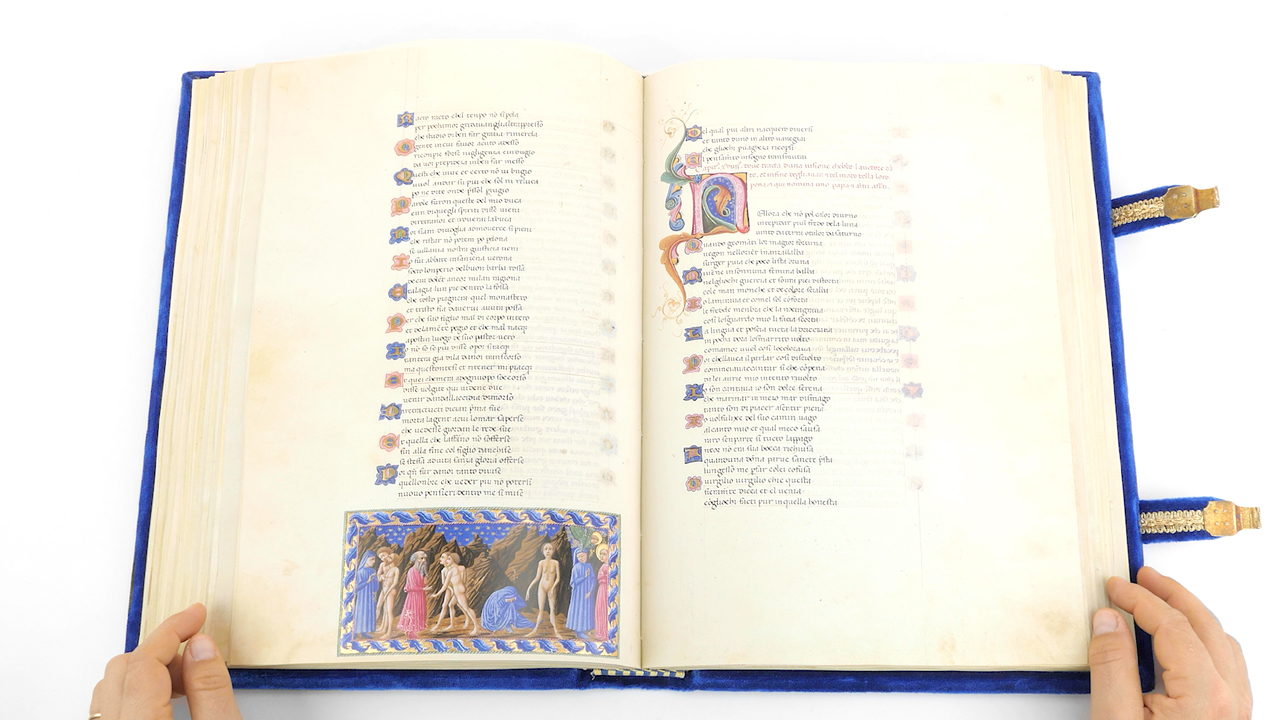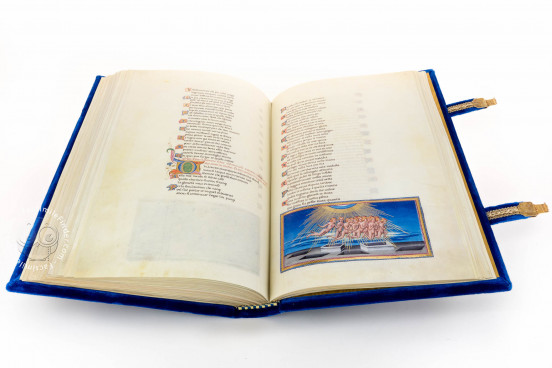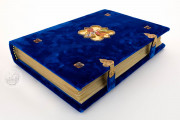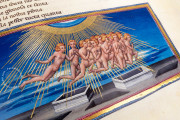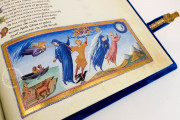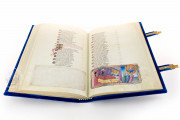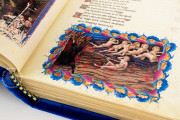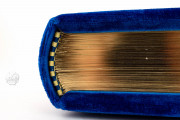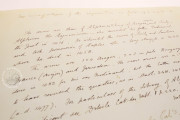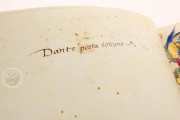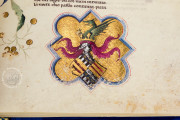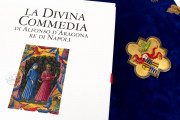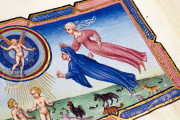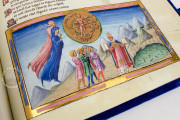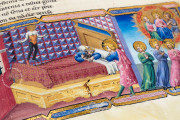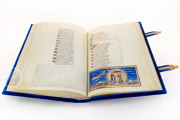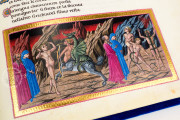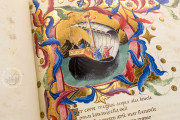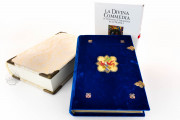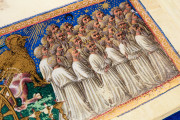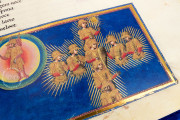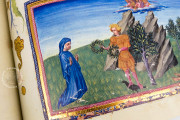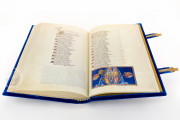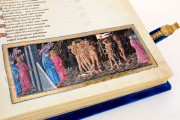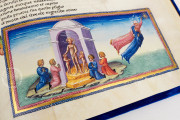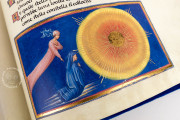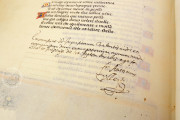The Yates Thompson Manuscript of the Divine Comedy, a long moralizing poem by Dante Alighieri, is named for one of its previous owners. It was copied and illuminated in Siena around 1444-1450. Also known as the Divine Comedy of Alfonso V of Aragon, after its first known owner, it is a beautiful codex with illumination by the Master of the Yates Thompson Commedia (named for the manuscript) and Giovanni di Paolo, whose sweet style is admired as much today as it was in his lifetime. It boasts 110 miniatures and three historiated initials.
An allegory of the soul's journey toward God, the Divine Comedy recounts the poet's travels through the realms of the dead in three cantiche ("canticles"): Inferno (hell), Purgatorio (purgatory), and Paradiso (paradise).
Two Illuminators of Contrasting Styles
The Master of the Yates Thompson Commedia painted the miniatures in Inferno and Purgatorio and all three historiated initials. He captured the drama of the scenes witnessed by Dante in hell and purgatory. His illustrations betray the protagonists' emotions, often heightened by his bold coloration. His painting style is informed by the naturalism found in contemporary Florentine art, especially apparent in his treatment of naked figures representing the souls of sinners.
Giovanni di Paolo painted the miniatures in Paradiso. He creates calmer, more visually pleasing scenes. His style is especially suited to his subject, not the suffering souls of hell and purgatory but the heroes of celestial paradise. In Giovanni's miniatures, Dante and his guide, Beatrice, appear to float effortlessly in a supernatural iridescent blue sky.
Torments Illustrated
Among the torments vividly pictured by the Master of the Yates Thompson Commedia are those meted out to the lustful, the avaricious, the wrathful, and extravagant spenders. Especially gruesome punishments are faced by those guilty of various forms of treachery.
Paradise Abstracted
Giovanni di Paolo's miniatures portray Dante's description of celestial paradise, a place of abstract concepts not readily translatable into visual form. Two miniatures include portraits of mid-fifteenth-century Florence. Both feature the cathedral with its impressive octagonal dome but not the lantern that eventually topped it (fols. 145r and 159r).
Beautiful Calligraphy
The poem is written in Gothic Rotunda script in a single column with exceedingly generous margins creating a stately appearance. Each tercet (group of three lines) is marked by a decorated letter of gold on a colored background set off in the left margin, and each of the 100 canti ("songs") by a larger decorated initial.
A Magnanimous Owner
Alfonso V (1396-1458), King of Aragon, known as "the magnanimous," a great patron of the arts, is the first recorded owner of the manuscript. His coat of arms appears on the opening page (fol. 1r). It passed through the ownership of his relatives Federico I d'Aragona (d. 1504), King of Naples, and Fernando de Aragón (1488-1550), Duke of Calabria. Fernando bequeathed the manuscript to the monastery of San Miguel de los Reyes (Valencia, Spain).
After the monastery's suppression in 1835, the codex appears in the collection of Luis Mayans y Enríquez de Navarra (1805-1880), who commissioned the current binding of gold-tooled red calf over pasteboard from Miguel Genesta (Madrid, 1860). Henry Yates Thompson (1838-1928) acquired the manuscript in 1901, and it entered the collection of the British Museum in 1941. It was transferred to the British Library upon its foundation in 1973.
We have 1 facsimile edition of the manuscript "Divine Comedy - Yates Thompson Manuscript": Divina Commedia di Alfonso d'Aragona facsimile edition, published by Franco Cosimo Panini Editore, 2006
Request Info / Price
